Triclinic and Monoclinic (2 and m) Space Groups
Steven Dutch, Professor Emeritus, Natural and Applied Sciences, University of Wisconsin - Green Bay
To the right of each space group is a listing of coordinate points. These are thecoordinates to which a general point (x,y,z) is transformed by the space group. Origins(called "equivalent points" in the International Tables), areadditional points around which the points are transformed. For example, (0,0,0) refers toa corner of the unit cell, (1/2,1/2,1/2) to the center. All space groups have origin(0,0,0). For a space group with an additional origin (1/2,1/2,1/2), point (x,y,z) is alsotransformed to (1/2+x,1/2+y,1/2+z) and so on.
The monoclinic space groups shown here are shown from two vantage points: one along thetwo-fold axes and one perpendicular to them. Coordinates are listed for both orientations.
Triclinic Space Groups
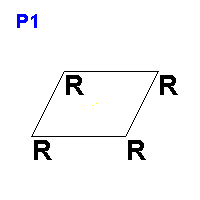 |
1. P1
(x,y,z) |
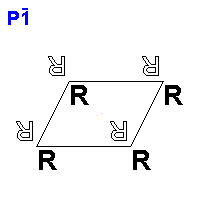 |
2. P1'
(x,y,z); (-x,-y,-z) |
Monoclinic (2) Space Groups
The monoclinic space groups shown here are shown from two vantage points: one along thetwo-fold axes and one perpendicular to them. Coordinates are listed for both orientations.
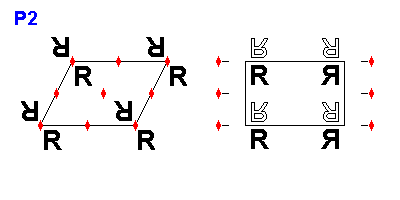 |
3. P2
(x,y,z); (-x,-y,z) P2 (x,y,z); (-x,y,-z) |
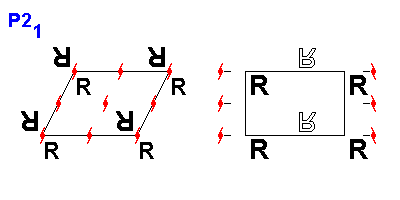 |
4. P21
(x,y,z); (-x,-y,1/2+z) P21 (x,y,z); (-x,1/2+y,-z) |
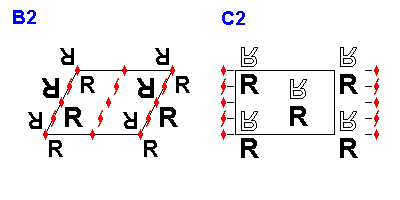 |
5. B2
(x,y,z); (-x,-y,z); C2 (x,y,z); (-x,y,-z); |
Monoclinic (m) Space Groups
The monoclinic space groups shown here are shown from two vantage points: one along thetwo-fold axes and one perpendicular to them. Coordinates are listed for both orientations.
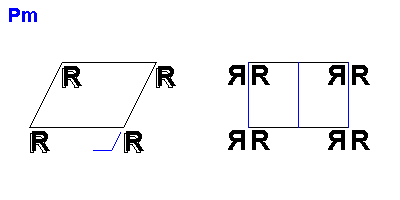 |
6. Pm
(x,y,z); (x,y,-z) Pm (x,y,z); (x,-y,z) |
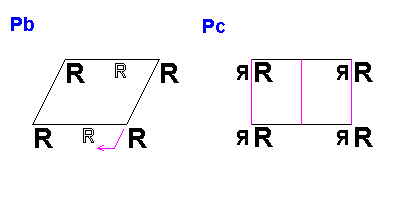 |
7. Pb
(x,y,z); (x,1/2+y,-z) Pc (x,y,z); (x,-y,1/2+z) |
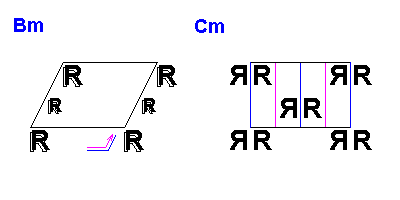 |
8. Bm
(x,y,z); (x,y,-z); Cm (x,y,z); (x,-y,z); |
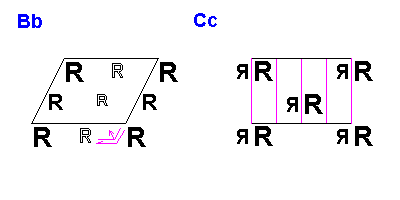 |
9. Bb
(x,y,z); (x,1/2+y,-z); Cc (x,y,z); (x,-y,1/2+z); |
Return to Symmetry Index
Return to 3d-Space Groups Index
Return to Crustal Materials (Mineralogy-petrology) Index
Return to Professor Dutch's Home Page
Created 30 March 1999, Last Update 31 May, 2020